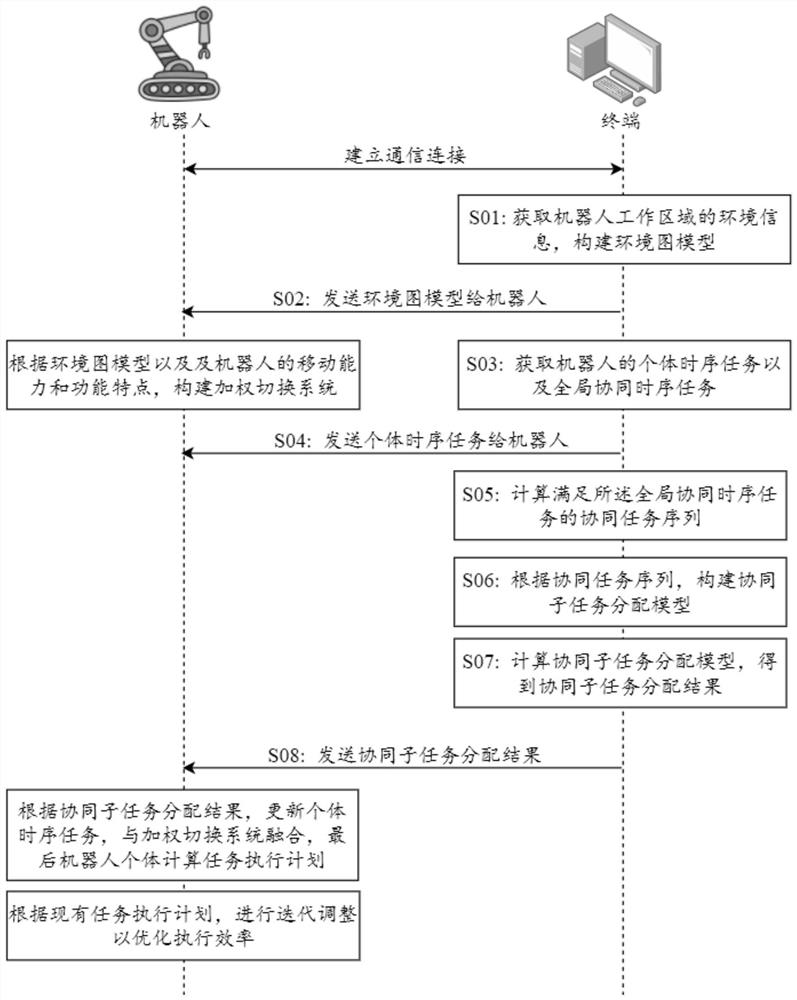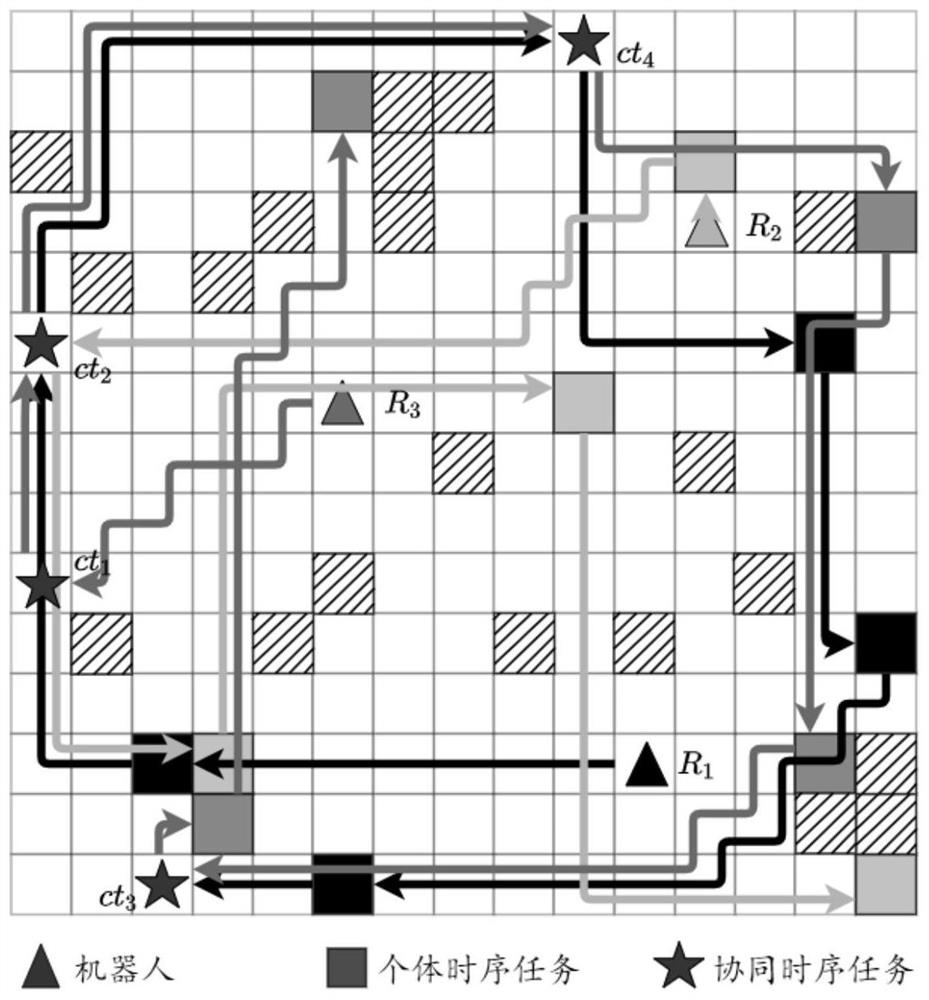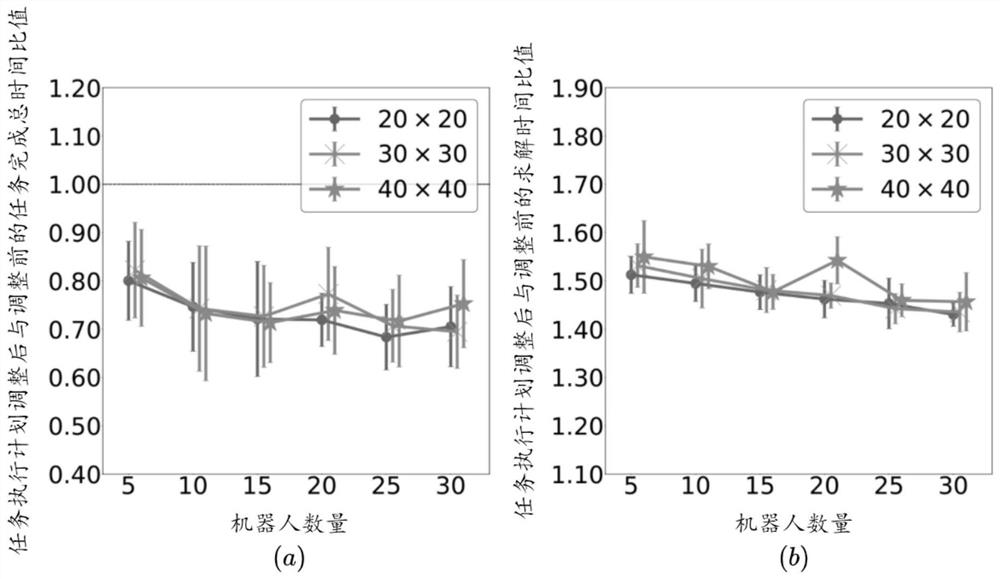Robot time sequence task planning method and device and electronic equipment
A robot and timing technology, applied in the direction of instruments, design optimization/simulation, resources, etc., can solve the problem that it is difficult to efficiently solve the problem that the robot has individual timing tasks and global collaborative timing tasks at the same time, so as to reduce waiting time, protect private information, overcome more complex effects
- Summary
- Abstract
- Description
- Claims
- Application Information
AI Technical Summary
Problems solved by technology
Method used
Image
Examples
Embodiment 1
[0018] figure 1 It is a flow chart of a robot time-sequence task planning method provided in an embodiment of the present invention. refer to figure 1 , the robot timing task planning method may include the following steps:
[0019] Step S01: Acquiring environmental information of the working area of the robot, and performing discretized modeling on the working area to obtain an environmental graph model.
[0020] Specifically, the environment information of the work area includes the initial position of the robot in the work area, the position of the task to be completed in the work area, and the like. This application does not limit the specific way of obtaining the environment information. It should be noted that the terminal needs to establish a communication connection with the robot before starting planning.
[0021] Specifically, the environment graph model is defined as in is the set of nodes corresponding to the task area in the working area; ε is the A co...
Embodiment 2
[0063] Figure 5 It is a schematic diagram of the robot timing task planning device provided in Embodiment 1 of the present invention. The robot timing task planning device provided in this embodiment and the above-mentioned robot timing task planning method belong to the same inventive concept. For details, see Figure 5 , the robot timing task planning device 200 includes: a first acquisition module 201, configured to acquire environmental information of the robot working area; a modeling module 202, configured to perform discretized modeling on the working area, and obtain an environmental graph model; The first sending module 203 is configured to send the environment map model to the robot, so that the robot can construct a weighted switching system according to the environment map model, the movement of the robot in the work area and the task execution ability; the second acquisition Module 204 is used to obtain the individual time-series tasks and global collaborative t...
PUM
 Login to View More
Login to View More Abstract
Description
Claims
Application Information
 Login to View More
Login to View More - R&D
- Intellectual Property
- Life Sciences
- Materials
- Tech Scout
- Unparalleled Data Quality
- Higher Quality Content
- 60% Fewer Hallucinations
Browse by: Latest US Patents, China's latest patents, Technical Efficacy Thesaurus, Application Domain, Technology Topic, Popular Technical Reports.
© 2025 PatSnap. All rights reserved.Legal|Privacy policy|Modern Slavery Act Transparency Statement|Sitemap|About US| Contact US: help@patsnap.com



